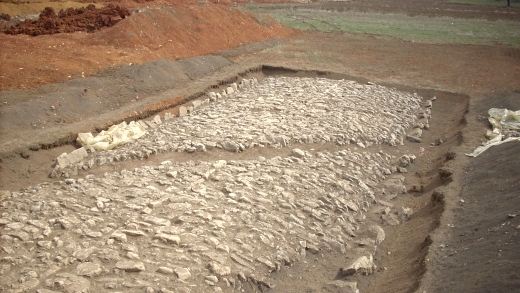A Ray of Light
When the drills stopped turning and the dust had finally settled at the construction site outside Dimitrovgrad, Serbia, on December 4, the silence that followed was just like any other day. However, the beams of light that now streamed through the opening in the mountain at dusk were something completely new.
During the course of their work that day, the construction crew working on the World Bank-funded Corridor X Highway Project finally broke through a wall of rock, connecting the two sides of the Progon tunnel and marking an important milestone in the three-year-old project.
“The importance of Serbia’s location along this transportation corridor cannot be overstated,” noted Baher El-Hifnawi, Lead Transport Economist at the World Bank, “the completion of this tunnel and the improvements along Corridor X will really help the country further take advantage of the increased traffic along this route.”
Though just under nine kilometers in length, the development of this section of the highway which includes bridges, roads and tunnels is of particular importance to the project - linking Serbia with areas outside of its borders - and furthering the project’s goal of facilitating sustainable economic development in the region by creating the shortest transport route between Western and Central Europe and South East Europe. At a total cost of more than $1.7 billion – $388 million of which is from the World Bank – this project represents the largest loan by the World Bank in Serbia.
The improvements to this transportation corridor will help improve efficiency along the route and is expected to reduce costs to users by at least 10%. The development of new routes, such as the Progon tunnel, will also create new transportation and economic linkages.
Crossroads of South East Europe
While this latest breakthrough in the project represents the first time this borderland between Serbia and Bulgaria will be linked via a tunnel, this accomplishment is merely the latest improvement to a transportation corridor that dates back more than two thousand years. It is not uncommon to hear Serbia referred to as the “cross-roads” of South East Europe and the uncovering of a section of an ancient Roman highway during the early stages of this project exemplifies why this title is so apt.
When the project first broke ground in 2010, work was halted almost as soon as it had begun. Preliminary excavations along the proposed route had uncovered a section of an ancient Roman road, commonly known as Via Militaris (the military highway). This discovery triggered World Bank safeguards that had been built into the project precisely for this kind of event and prompted the team to begin working with the Serbian Institute for the Protection of Cultural Monuments to preserve this window into antiquity.
This ancient highway, much like its modern counterpart being constructed today, was designed to connect Serbia – then part of the Roman Empire – to other areas of Asia Minor and the Middle East. This route still represents the shortest link between western and southeastern Europe with Turkey and other eastern regions, and this project will serve to improve economic traffic between Belgrade and Istanbul today, just as it did between Singidunum (ancient Belgrade) and Constantinople (ancient Istanbul) in the 1st century A.D.

